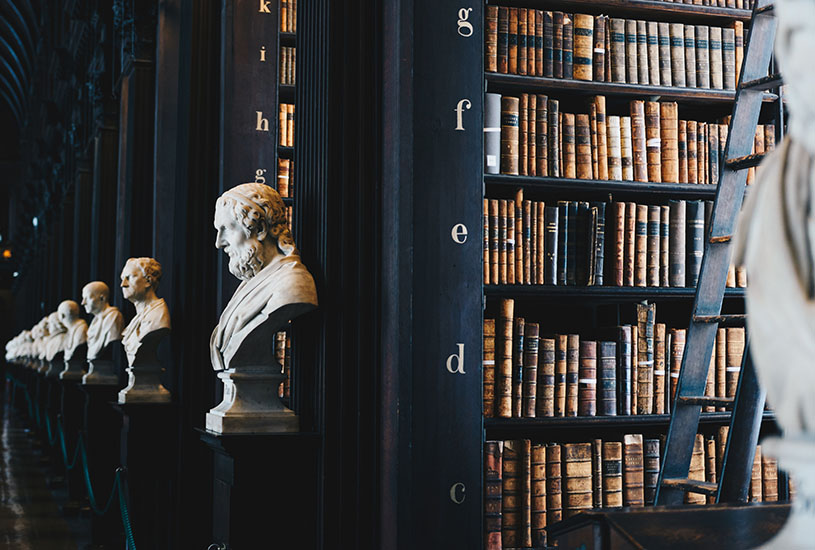A project investigating the history of collecting in Western Australia is turning up surprising finds around Australia and the world.
When Deakin University historian Dr Tiffany Shellam and her fellow research partners opened a drawer at London’s Natural History Museum earlier this year, the last thing they expected to see was a collection of Western Australian objects from the 1800s, complete with original, handwritten labels.
For Dr Shellam, whose work focuses on early explorers in Western Australia and their collections, the discovery of the soil samples and rocks (some of which are not rocks at all, but Indigenous artefacts) collected by a lieutenant in the British Royal Navy, Phillip Parker King, was an exciting find.
“Royal Naval expeditions played a huge role as agents for different collections and collection networks. There was a real trade in botanical, ethnographic and geological items from places like Western Australia,” Dr Shellam said.
[testimonial_text]Through the agency of naval expeditions, collected items ended up all over Europe and the UK in private collections and public museums and helped to shape how people saw Western Australia and Australia.[/testimonial_text]
[testimonial_picture name=”Dr Tiffany Shellam” details=”Deakin University historian”]
 [/testimonial_picture]
[/testimonial_picture]The Natural History Museum find is significant for the Australian Research Council Linkage project Dr Shellam is working on with fellow Deakin researchers Professor Andrea Witcomb and Dr Denise Cook.
“Collecting the West” is a unique collaboration between Deakin and The University of Western Australia in partnership with Western Australia’s key collecting institutions the Art Gallery of Western Australia, the State Library of Western Australia and the Western Australian Museum, as well as the British Museum, where some of the state’s collections are held.
A multi-disciplinary team specialising in archaeology, art history, biodiversity, ethnography, history, maritime and museum studies will examine for the first time Western Australia’s history of collecting and how it has shaped the state’s national and international identity.
Prof Witcomb, Professor of Cultural Heritage and Museum Studies at Deakin and an expert in heritage and museums, is co-leading the project with The University of Western Australia’s Prof Alistair Paterson.
[testimonial_text]Although the east coast garners most public attention on the history of colonial Australia, the earliest items collected from the continent and taken back to Europe were actually from what is now known as Western Australia. Shells collected from the west coast by William Dampier in 1699 went to Britain’s Ashmolean Museum and the British Museum.[/testimonial_text]
[testimonial_picture name=”Professor Andrea Witcomb” details=”Professor of Cultural Heritage and Museum Studies at Deakin University”]
 [/testimonial_picture]
[/testimonial_picture]She explained that “Collecting the West” would take a “local, national and international perspective in order to achieve a new understanding of how collecting framed Western Australia’s place in the world.”
This holistic approach to understanding the role of collections in producing a sense of place will also help illuminate the place of Western Australia in the national imagination as investigators trace the use of material from WA across the nation, including those held in the Melbourne Museum.
“We’ll examine how collections were created and, in the process of developing scientific disciplines and classifications, were broken up and dispersed,” Prof Witcomb said.
“We hope to recover the history of collecting and the ways in which trade networks, scientific explorations, empire building and creating a sense of home in the new colony shaped what was collected, how it was collected and why.”
Prof Witcomb said that “Collecting the West”, while specifically focused on Western Australian collections, has wider implications for the field in strengthening relationships and knowledge sharing between cultural institutions, improving the quality of historical data and informing the role of contemporary collecting.
It may also play a role in reconnecting items from collections with their original owners.
“The ‘moment of encounter’ is important for the contemporary context of a collection,” agreed Dr Shellam, whose work includes examining such encounters between Europeans and Indigenous Australians.
“If the item was exchanged as a gift or trade, then the original owners might not seek to have it back, but if the encounter was one of violence or theft, then more emphasis might be placed on return.
“It’s important to unearth the historical context by talking to members of the contemporary community.”
“Collecting the West” will host exhibitions in Perth over the next four years at the State Library of Western Australia, the Western Australian Museum and Art Gallery WA drawing on the project’s research, including a major exhibition on Western Australia’s 20th century art and exhibitions leading up to the opening of the new Western Australian Museum in 2020.
Published by Deakin Research 16 June 2017.



